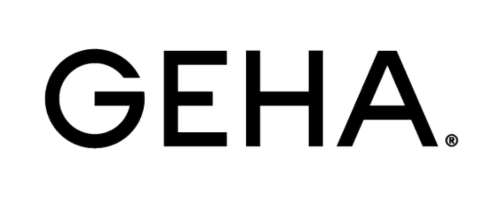Value Analysis (VA) and Value Engineering (VE) are systematic approaches used in various industries to improve the value of a product or process. These techniques aim to optimize functionality while minimizing costs, ensuring that the end product meets or exceeds customer expectations without unnecessary expenditures.
VA focuses on identifying and eliminating unnecessary costs during the product’s lifecycle, from initial concept to final disposal. It involves a thorough examination of each component and process to determine if it contributes to the overall value. VE, on the other hand, is often implemented during the design phase of a product or process. It emphasizes innovation and creative problem-solving to achieve the desired functionality at the lowest possible cost.
By adopting VA/VE techniques, companies can achieve significant cost savings, enhance product quality, and improve customer satisfaction. These methods also promote a culture of continuous improvement and innovation within an organization.
Mental Health Matters – Make it a Priority! If you or a loved one are ready to begin regaining autonomy over your health and well-being, know that we’re here for you. Let us guide you through your recovery journey and enable you to lead the happy, healthy, and fulfilling life you deserve. Contact us for Mental Health Services in New Jersey.
Understanding Value Analysis (VA)

Value Analysis (VA) is a methodical approach aimed at enhancing the value of a product or service by scrutinizing its components, processes, and functions. The primary objective of VA is to identify and eliminate any unnecessary costs without affecting the quality or performance of the product. This process is particularly beneficial during the later stages of product development or even after the product has been launched.
VA involves a step-by-step analysis that includes the following stages:
- Information Gathering: Collect comprehensive data about the product, including its design, materials, manufacturing processes, and costs.
- Function Analysis: Break down the product into its fundamental components and functions to understand their purpose and necessity.
- Creative Phase: Generate alternative solutions to achieve the same functions at a lower cost, often through brainstorming sessions and collaborative efforts.
- Evaluation: Assess the feasibility and impact of the proposed alternatives, considering factors such as cost, quality, and customer satisfaction.
- Implementation: Execute the chosen alternatives and monitor their performance to ensure they meet the desired objectives.
By focusing on these stages, VA helps organizations achieve a balance between cost and functionality, leading to improved product value and customer satisfaction. It also fosters a culture of continuous improvement and innovation, encouraging teams to think creatively and challenge the status quo.
Exploring Value Engineering (VE)

Value Engineering (VE) is a systematic method focused on improving the value of a product, system, or service by examining its functions and finding more cost-effective means to achieve them. Unlike Value Analysis, which is often applied later, VE is typically integrated during the design and development stages. This proactive approach ensures that value optimization is built into the product from the outset.
VE involves a structured process that includes several key phases:
- Preparation: Define the project’s scope, objectives, and constraints. Assemble a multidisciplinary team to bring diverse perspectives and expertise.
- Information Phase: Gather detailed information about the project, including design specifications, costs, and performance requirements.
- Function Analysis: Identify and analyze the primary and secondary functions of the product or system. This phase often uses function analysis systems technique (FAST) diagrams to visualize and understand the relationships between functions.
- Creative Phase: Generate a wide range of ideas and alternatives to perform the identified functions. Encourage innovative thinking and explore unconventional solutions.
- Evaluation Phase: Assess the feasibility, cost-effectiveness, and impact of the proposed ideas. Select the most promising alternatives for further development.
- Development Phase: Refine and develop the chosen alternatives into actionable plans. Prepare detailed designs, cost estimates, and implementation strategies.
- Presentation and Implementation: Present the final recommendations to stakeholders and proceed with the implementation. Monitor the results to ensure the desired value improvements are achieved.
By engaging in VE, organizations can significantly reduce costs, enhance product quality, and increase customer satisfaction. The collaborative nature of VE encourages cross-functional teamwork and leverages diverse expertise to uncover innovative solutions that might otherwise be overlooked.
Key Benefits of VA/VE Techniques

Implementing VA/VE techniques can bring a myriad of benefits to an organization, making these methodologies highly valuable in both manufacturing and service industries. Here are some of the key benefits:
- Cost Reduction: One of the most significant advantages is the potential for substantial cost savings. By identifying unnecessary expenditures and optimizing resources, VA/VE techniques help reduce production costs and improve profitability.
- Improved Quality: VA/VE focuses on enhancing the value of a product or service without compromising quality. This often leads to higher-quality outputs that meet or exceed customer expectations.
- Enhanced Efficiency: Streamlining processes and eliminating inefficiencies are core aspects of VA/VE. This results in faster production times, reduced waste, and better utilization of resources, ultimately leading to improved operational efficiency.
- Innovative Solutions: The structured approach of VA/VE encourages creative problem-solving and innovation. By challenging existing assumptions and exploring alternative methods, organizations can discover new, more effective ways to achieve their objectives.
- Customer Satisfaction: By delivering higher-value products and services at a lower cost, organizations can enhance customer satisfaction and loyalty. Satisfied customers are more likely to become repeat buyers and advocates for the brand.
- Competitive Advantage: Companies that effectively implement VA/VE techniques can gain a competitive edge in the market. Cost-effective, high-quality products and services can differentiate a company from its competitors.
- Cross-Functional Collaboration: VA/VE initiatives often involve teams from various departments working together. This fosters a culture of collaboration and knowledge-sharing, leading to better decision-making and more cohesive strategies.
- Risk Mitigation: By thoroughly analyzing functions and exploring alternatives, organizations can identify potential risks early in the process and develop strategies to mitigate them. This proactive approach helps prevent costly errors and delays.
Incorporating VA/VE techniques into your organizational processes can lead to a range of improvements, from cost savings and quality enhancements to innovation and customer satisfaction. These benefits make VA/VE an essential tool for any organization looking to optimize its operations and achieve long-term success.
Implementing VA/VE in Your Organization

Implementing VA/VE techniques in your organization can seem daunting, but with a structured approach, it becomes manageable and highly rewarding. Here are some key steps to consider:
- Assemble a Cross-Functional Team: The first step is to form a team that includes members from various departments such as engineering, finance, procurement, and marketing. This diverse group will bring different perspectives and expertise to the table, enhancing the problem-solving process.
- Identify Target Areas: Pinpoint the products, services, or processes that would benefit most from VA/VE analysis. Look for areas with high costs, quality issues, or inefficiencies. Prioritizing these areas will maximize the impact of the initiative.
- Gather Data: Collect relevant data on costs, performance, and customer feedback. This information will serve as the foundation for your analysis and help identify opportunities for improvement.
- Conduct Functional Analysis: Break down the target areas into their basic functions and assess their necessity and performance. This step involves asking critical questions like “What does it do?” and “Why is it needed?” to understand the core value of each function.
- Brainstorm Alternatives: Encourage the team to brainstorm alternative ways to achieve the same functions at a lower cost or with better performance. This stage is where creativity and innovation come into play, leading to potential breakthroughs.
- Evaluate and Select Solutions: Assess the feasibility, cost, and benefits of the proposed alternatives. Select the most promising solutions that offer the best balance between cost savings and value enhancement.
- Develop an Implementation Plan: Create a detailed plan outlining the steps, timeline, and resources required to implement the chosen solutions. Assign responsibilities and set milestones to track progress.
- Monitor and Review: Once implemented, continuously monitor the results and gather feedback. Evaluate the effectiveness of the changes and make adjustments as needed to ensure sustained improvement.
By following these steps, organizations can systematically implement VA/VE techniques and unlock significant value. The process not only leads to cost savings and efficiency gains but also fosters a culture of continuous improvement and innovation.
Real-World Examples of VA/VE Success
Real-world examples of VA/VE techniques in action illustrate the profound impact these methods can have on cost savings and efficiency improvements. Here are a few notable success stories:
- Toyota: Toyota is renowned for its use of VA/VE techniques to streamline production processes and reduce costs. By analyzing vehicle components and manufacturing steps, Toyota identified opportunities to simplify designs and use less expensive materials without compromising quality. This approach has contributed significantly to their reputation for producing reliable and affordable vehicles.
- Procter & Gamble: Procter & Gamble utilized VA/VE to revamp their packaging processes. By adopting innovative design adjustments and material substitutions, they achieved substantial cost reductions and environmental benefits. For instance, they redesigned the packaging for their laundry products, resulting in significant savings on material costs and a reduction in waste.
- General Electric: General Electric (GE) applied VA/VE techniques to their aviation division, focusing on the development of more efficient jet engines. Through meticulous functional analysis and creative problem-solving, GE engineers were able to enhance engine performance while reducing production and maintenance costs. This success has solidified GE’s position as a leader in the aerospace industry.
- Ford Motor Company: Ford employed VA/VE methods to optimize their supply chain and manufacturing processes. By conducting thorough value analysis on various components, Ford identified opportunities to reduce costs and improve product quality. This initiative led to more efficient production lines and better-performing vehicles.
These examples demonstrate the transformative power of VA/VE techniques across different industries. By embracing these methods, organizations can achieve significant cost savings, enhance product quality, and drive continuous improvement.
Mental Health Matters – Make it a Priority! If you or a loved one are ready to begin regaining autonomy over your health and well-being, know that we’re here for you. Let us guide you through your recovery journey and enable you to lead the happy, healthy, and fulfilling life you deserve. Contact us for Mental Health Services in New Jersey.
















